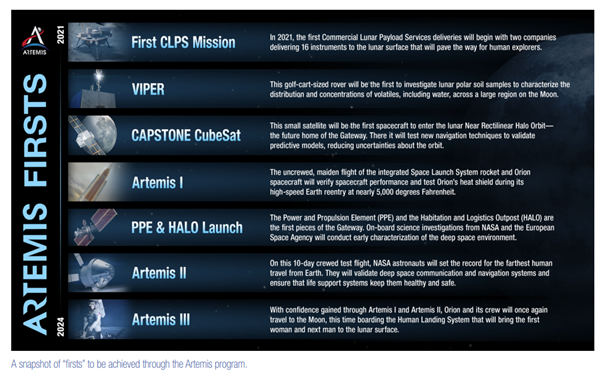

Context
Scientists have for the first time grown plants in lunar soil brought back by astronauts in the Apollo program.
About
About the research:
- For their experiment, the researchers used just 12 grams (a few teaspoons) of lunar soil collected from various spots on the Moon during the Apollo 11, 12, and 17 missions.
- In tiny thimble-sized pots, they placed about a gram of soil (called "regolith") and added water, then the seeds. They also fed the plants a nutrient solution every day.
- The researchers chose to plant arabidopsis thaliana, a relative of mustard greens, because it grows easily and, most importantly, has been studied extensively.
- Its genetic code and responses to hostile environments -- even in space -- are well known.
- As a control group, seeds were also planted in soil from Earth as well as samples imitating lunar and Martian soil.
Key findings:
- Every plant -- whether in a lunar sample or in a control -- looked the same up until about day six.
- But after that, differences started to appear: the plants in the lunar samples grew more slowly and had stunted roots.
- After 20 days, the scientists harvested all the plants, and ran studies on their DNA.
- In the future, scientists want to understand how this environment could be made more hospitable.
- NASA is preparing to return to the Moon as part of the Artemis program, with a long-term goal of establishing a lasting human presence on its surface.
|
About NASA’s Artemis mission:
|



